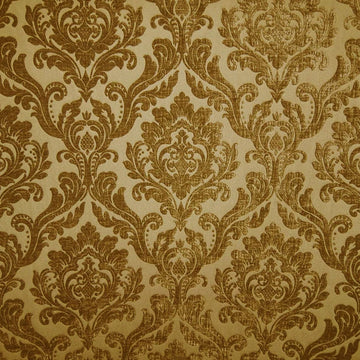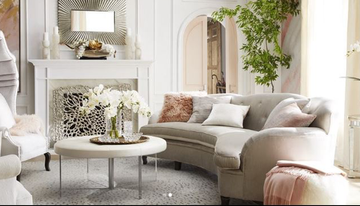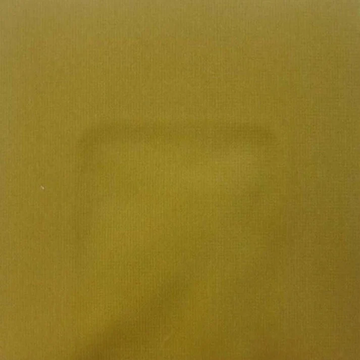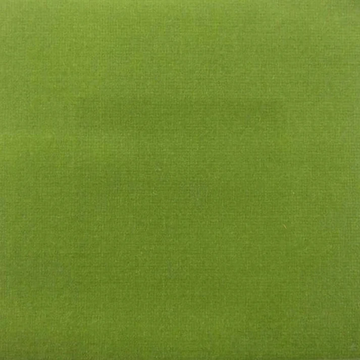The textile industry is vast and varied, with fabrics playing a pivotal role in both aesthetic appeal and functionality. Among the myriad of options, chenille and microfiber stand out due to their unique properties, textures, and applications. Microfiber fabrics are also referred to in the current market as performance fabrics. Understanding their differences is crucial for selecting the right material for your project, whether it's upholstery, clothing, or home decor. This article aims to provide an in-depth comparative analysis of chenille and microfiber, supported by data and expert insights, to aid your decision-making process.
Understanding Chenille Fabric
Chenille is a popular fabric known for its plush, velvety feel. Made from various types of yarns such as cotton, silk, and acrylic, chenille is woven into loops, creating its distinct texture. This fabric was first produced in the 18th century in France, and its name means "caterpillar" in French, aptly describing its soft, fluffy touch. It has since grown in popularity and is commonly used across the globe for various purposes such as home decor, garments, and textiles.
Chenille's popularity owes itself to a host of beneficial properties:
- Comfort: The raised tufting of the chenille yarn contributes immensely to its comfort.
- Variety: The versatile nature of chenille fabric allows for considerable variation in design and colour.
- Affordability: Compared to many other luxury fabrics, chenille is reasonably priced, making it a popular choice for many households.
Characteristics of Chenille
- Softness: Chenille's soft texture makes it a favored choice for furniture upholstery, bedding and clothing. The soft touch is akin to that of velvet.
- Color Richness: The unique weaving technique allows for vibrant and varied colors. Due to its superior color retention, chenille fabrics tend to preserve their color and sheen even after multiple washes.
- Durability: Chenille offers a robust structure that holds well over time, although it is prone to shrinking and may require specific maintenance. Consequently, dry cleaning is often recommended over machine washing.
- Sheen: The distinctive pile of chenille gives it a reflective sheen, adding an elegant touch to any project or product it is used in, be they carpets, throw pillows, or jackets.
Exploring Microfiber Fabric
Microfiber is a synthetic fabric made of polyester and polyamide fibers that are extremely fine—thinner than a strand of silk. Due to its fine structure, microfiber is renowned for its strength and durability, making it an excellent material for diverse applications. From home cleaning products, like dusters and mops, to high-performance athletic wear and luxurious, comfortable upholstery—microfiber's range of applications is truly impressive. Additionally, microfiber boasts superior water and stain-resistant properties, making it a particularly user-friendly fabric.
Key Advantages of Microfiber
- Durability: Microfiber fabrics are known to be long-lasting and resilient, often outperforming natural fabrics like cotton in terms of longevity, thus the reason they are often referred to as performance fabrics.
- Hypoallergenic: Microfiber is a hypoallergenic fabric, making it suitable for use in bedding and clothing for those with sensitive skin or allergies.
- Breathability: Despite its synthetic nature, microfiber manages to retain breathability, which is especially beneficial in athletic wear.
Comparison: Chenille vs. Microfiber
|
Property |
Chenille |
Microfiber / Performance |
|
Softness |
Very Soft |
Soft |
|
Color Retention |
Excellent |
Good |
|
Durability |
Good with proper care |
Excellent |
|
Maintenance |
Dry clean recommended |
Machine washable |
|
Sheen |
High sheen |
Low sheen |
|
Hypoallergenic |
No |
Yes |
Key Features of Microfiber
- Strength: Microfiber fabric is exceptionally strong and resistant to tears.
- Stain Resistance: Its tightly woven structure makes it resistant to water and stains.
- Lightweight: Despite its durability, microfiber is lightweight and comfortable for various uses.
- Maintenance: It is easy to clean and often requires less care compared to other fabrics.
Chenille vs. Microfiber: A Comparative Analysis
|
Property |
Chenille |
Microfiber / Performance |
|
Softness |
Very soft |
Moderately soft |
|
Durability |
Durable with maintenance |
Highly durable |
|
Maintenance |
Needs specific care |
Low maintenance |
|
Cost |
Moderate to high |
Low to moderate |
|
Application |
Furniture, decorative items |
Cleaning products, clothing |
Environmental Considerations
In choosing between chenille and microfiber, environmental impact is a significant consideration for many. Chenille, often made from natural fibers, may be biodegradable, depending on the material used. However, its production can involve chemical dyes and water-intensive processes. On the other hand, microfiber, though synthetic, is long-lasting and often made from recycled materials, though microfiber shedding can contribute to microplastic pollution.
Applications of Chenille and Microfiber
Chenille
Chenille's rich texture and softness make it ideal for:
- Upholstery and furniture coverings
- Decorative pillows and throws
- Fashion garments
- Luxury draperies
Microfiber
Microfiber’s versatility and durability make it suitable for:
- Cleaning cloths and mops
- Activewear and sports uniforms
- Luggage and backpacks
- Absorbent towels
Cost Analysis of Chenille and Microfiber
When budgeting for your project, consider the cost implications. Chenille typically ranges from moderate to high in price due to its luxurious appearance and tactile qualities, making it a costlier option for large-scale projects. Microfiber, by comparison, is generally more affordable, offering a budget-friendly option without sacrificing durability or aesthetic appeal.
Consumer Preferences and Trends
According to industry reports, consumer preferences often sway towards fabrics that offer ease of maintenance and versatility. Microfiber's popularity has surged due to its practicality and low maintenance needs, especially in fast-paced environments. However, chenille maintains a steady fan base among those preferring classical elegance and tactile warmth.
Explore more about these fabric trends on Haute House Fabric's collection.
Expert Insights and Recommendations
Experts in textile manufacturing emphasize the importance of aligning fabric choice with intended use. For high-traffic areas where durability and stain resistance are paramount, microfiber emerges as the superior choice. Conversely, for pieces where luxury and comfort are prioritized, chenille stands out. Each project demands a unique approach, and being informed will arm you with the confidence to make the best choice.
Key Takeaways
Deciding between chenille and microfiber involves a careful assessment of your project's requirements. Each fabric brings its benefits—from chenille's luxurious texture to microfiber's practicality and strength. Future fabric innovations are expected to increasingly factor in sustainability, pushing both materials to evolve in their environmental impact and functionality. As you explore choices, remember that the right fabric enhances not just the aesthetic but also the lifespan and functionality of your creation.
Frequently Asked Questions (FAQs)
What is the main difference between chenille and microfiber?
The primary difference lies in their composition and textures. Chenille is often made from natural fibers with a soft, plush texture, making it ideal for luxurious or decorative purposes like furniture upholstery and clothing. On the other hand, microfiber is a synthetic fabric composed of extremely fine polyester and polyamide fibers. It provides exceptional durability, stain resistance, and lightweight, making it preferable for practical items, such as cleaning products and activewear. Choosing between them depends significantly on your project needs, whether you're prioritizing texture and appearance (chenille) or durability and ease of care (microfiber).
Is chenille more environmentally friendly than microfiber?
Environmental impact is a crucial factor in textile selection. Chenille made from natural fibers may be more environmentally friendly in aspects of biodegradability. However, its production can still involve considerable chemical use and require water, which might negate some eco-benefits. Meanwhile, microfiber, despite being synthetic, is often manufactured with recycled materials, but it faces criticism for contributing to microplastic pollution during washing. Therefore, selecting a fabric based on environmental considerations involves weighing these trade-offs and exploring sustainable options or alternatives where possible.
What maintenance does chenille fabric require?
Chenille fabric, prized for its luxurious look and feel, demands careful maintenance to preserve its quality. Regular gentle vacuuming helps prevent dust and dirt build-up that can wear down its plush pile. Direct exposure to sunlight should be minimized to prevent fading, and any spills should be addressed promptly by blotting the area with a dry cloth. Unlike some fabrics, using water and soap can sometimes damage chenille, so professional cleaning with appropriate solvents is recommended for significant stains. Understanding and following these maintenance guidelines will ensure that chenille upholstery or garments maintain their charm and elegance over time.
Can microfiber withstand heavy use?
Yes, microfiber is highly suitable for heavy use due to its exceptional durability and resistance. Made from tightly woven synthetic fibers, microfiber is resistant to tears and abrasions, making it an ideal choice for high-traffic applications such as upholstering furniture, commercial spaces, and sports gear. Its ability to repel stains and water further adds to its robustness, requiring less frequent cleaning. The strong fibers used in microfiber fabrics ensure they maintain their integrity and visual appeal even through intensive daily usage, underscoring its reputation as a highly practical and resilient material.
Are there color options available for both fabrics?
Both chenille and microfiber offer a wide spectrum of color choices, appealing to various aesthetic preferences. Chenille's texture lends itself well to deep, vibrant colors as its pile creates depth and a velvety sheen, adding sophistication to the hue. This feature makes chenille popular among those looking for rich and luxurious tones. Microfiber, available in an array of solid and patterned designs, offers colorfast properties, ensuring the colors remain vivid over time despite frequent washing. This variety in both fabrics allows designers and consumers to select from vibrant bolds to elegant neutrals, aligning with specific design philosophies.
Explore more fabric options on Haute House Fabric's website.






